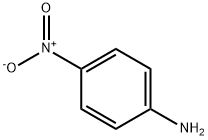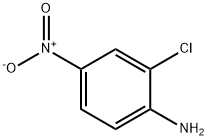A0800450
pNA(p-nitroaniline) , ≥99% , 100-01-6
Synonym(s):
4-Nitroaniline;p-Nitraniline
CAS NO.:100-01-6
Empirical Formula: C6H6N2O2
Molecular Weight: 138.12
MDL number: MFCD00007858
EINECS: 202-810-1
Update time: 2022-07-08
PRODUCT Properties
| Melting point: | 147 °C |
| Boiling point: | 332 °C |
| Density | 1,437 g/cm3 |
| bulk density | 630kg/m3 |
| vapor density | 4.77 (vs air) |
| vapor pressure | 1.33 hPa (142 °C) |
| refractive index | 1.6465 (estimate) |
| Flash point: | 329 °F |
| storage temp. | Store below +30°C. |
| solubility | ethanol: soluble25mg/mL, slightly hazy, yellow to brownish-yellow |
| pka | 1(at 25℃) |
| Colour Index | 37035 |
| form | crystalline |
| color | yellow |
| Specific Gravity | 1.437 |
| Odor | Ammonia odor |
| PH Range | 7 |
| Water Solubility | 0.8 g/L (20 ºC) |
| Merck | 14,6584 |
| BRN | 508690 |
| Henry's Law Constant | 1.15 x 10-9 atm?m3/mol at 25 °C (thermodynamic method-GC/UV spectrophotometry, Altschuh et al., 1999) |
| Exposure limits | NIOSH REL: TWA 3; IDLH 300; OSHA PEL: TWA 6; ACGIH TLV:
TWA 3 (adopted). |
| Dielectric constant | 56.3(160.0℃) |
| Stability: | Stable. Incompatible with sodium hydroxide, strong oxidizing agents, strong reducing agents. May attack some plastics, rubber and coatings. May decompose explosively in the presence of initiators. Moisture sensitive. May be light and air-sensitive. |
| LogP | 1.2 at 30℃ |
| CAS DataBase Reference | 100-01-6(CAS DataBase Reference) |
| NIST Chemistry Reference | p-Nitroaniline(100-01-6) |
| EPA Substance Registry System | p-Nitroaniline (100-01-6) |
Description and Uses
Product of chromogenic reactions.
Safety
| Symbol(GHS) |   GHS06,GHS08 |
| Signal word | Danger |
| Hazard statements | H301+H311+H331-H373-H412 |
| Precautionary statements | P273-P280-P301+P310-P302+P352+P312-P304+P340+P311-P314 |
| Hazard Codes | T,F |
| Risk Statements | 23/24/25-33-52/53-39/23/24/25-11 |
| Safety Statements | 28-36/37-45-61-28A-16-1/2-7 |
| RIDADR | UN 1661 6.1/PG 2 |
| OEB | B |
| OEL | TWA: 3 mg/m3 [skin] |
| WGK Germany | 2 |
| RTECS | BY7000000 |
| F | 8 |
| Autoignition Temperature | 500 °C |
| Hazard Note | Toxic |
| TSCA | Yes |
| HazardClass | 6.1 |
| PackingGroup | II |
| HS Code | 29214210 |
| Hazardous Substances Data | 100-01-6(Hazardous Substances Data) |
| Toxicity | Acute LD50 for wild birds 75 mg/kg, guinea pigs 450 mg/kg, mice 810 mg/kg, quail 1,000 mg/kg, rats 750 mg/kg (quoted, RTECS, 1985). |
| IDLA | 300 mg/m3 |




